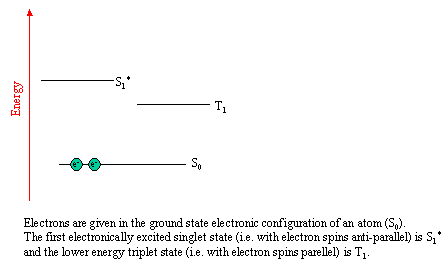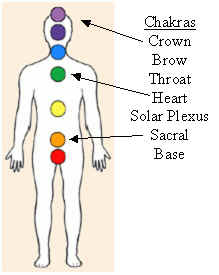World of Colour
|
The physical measurement of colour | |
Measuring Concentrations using absorbance, | |
Transition Metal Solutions, |
Rhodopsin and the eye
Basics behind Dyes and Pigments
Phosphorescence and Fluorescence
A Thermochromic example
Colour Therapy
Detection using Optical Sensors
Symbols, Glossary, Disclaimer, Credits, References, feedback..
Action 3: Book turning. This image is taken from gifs (ref. 14) and is copyright restricted according to the source given (i.e. it is not the authors' own work).
In organic molecules the
many-state energy levels present allow phosphorescence and fluorescence to occur
under exposure to an appropriate light source.

Press Next Slide to see the above processes in action.
Action 6: The process of phosphorescence and fluorescence.
Thermochromic
The Sulphur Nitride S4N4 has the property of changing colour with temperature. At low temperatures of -200°C the compound is colourless, however if allowed to warm up to -30°C it turns yellow. Upon heating to +100°C, the compound turns red.
If the valence bond canonicals (given below) are examined, it is noted that the colour change observations are due to how the bonding changes with temperature: at low temperatures the weak trans-angular S----S bonding modes are maximized within the HOMO as there are few vibrationally active states. As the temperature is increased these states become active and therefore the S------S interactions are broken.

This is more easily visualized in 3D. Hover over the ![]() image
below to see the effect at
image
below to see the effect at

Action
7: Sulphur Nitride at low and high temperatures.
Action 8: Cool Spin. This image is taken from gifs (ref. 14) and is copyright restricted according to the source given (i.e. it is not the author’s own work).
Colour Therapy
Not as an alternative but as an aid to modern medicine, colour therapy has arisen through the centuries. I recently remember watching a television programme of disease through the ages and there was an interesting case of a renaissance prince with a childhood disease such as smallpox. The court physician of the time put him in a room with red cloth on the windows in order to minimize the effect of scarring on the skin. This would have prevented the natural UV rays in sunlight from interaction with the skin and although the reason behind this treatment was unknown at the time, it worked out well for the prince.
On searching the internet, I
came across several very interesting websites on colour therapy and for more
detailed information I suggest you follow the link given below. The website www.colourtherapyhealing.com
is easy to understand at all levels and the section on 'colour interactive' and
'colour blindness' was particularly good. The charkas of the body are areas which
are thought to be affected by that particular colour: 
Figure 10: The
Chakras of the body. This image is taken from colourtherapyhealing (ref.
11) and is
copyright restricted according to the source given (i.e. it is not the
author’s own work).
The neuro-peptides produced by light stimulation have many physiological effects within the body. It therefore follows that different colours produce different emotions but also it should be noted that an excess of a certain neuro-peptide can lead to an unwanted disease. A depressive medical disorder which is successfully treated by colour therapy is S.A.D.s, or Seasonally Affective Disorder. This occurs in the winter and is due to a reduced ability to absorb light. For sufferers a good way to combat the disorder is to reduce the amount of blue in the surroundings as this is a cool, tranquillizing colour. The website www.beyondreason.niagara.com/holistic.htm contains many other interesting facts and anecdotes on the effects of colour including marketing spins, emotions and interpretation of auras - It is well worth a quiet read!